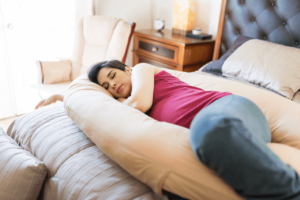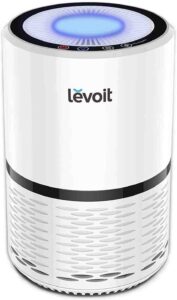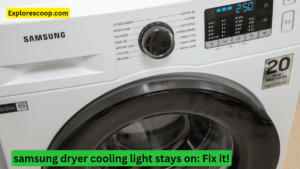Transform Your Lawn with Stunning Fake Grass Carpet | Enhance Curb Appeal
Transform Your Lawn with Stunning Fake Grass Carpet | Enhance Curb Appeal
Introduction
If you’re looking for a low-maintenance and all-weather solution for your lawn or backyard, then consider fake grass carpets. Unlike natural grass, this synthetic alternative requires no watering, mowing, or fertilizing, yet looks and feels just like the real thing.
Moreover, it can be installed anywhere, including indoors, to add a touch of greenery and freshness to your space. But before you jump on the bandwagon, there are a few things you should know about fake grass carpets, including their types, installation, maintenance, and quality. In this blog post, we’ll cover all that and more, so keep reading to be an informed buyer.
What is an artificial/fake grass carpet
Artificial grass carpet or fake grass carpet is a type of synthetic material that mimics the appearance and texture of natural grass. It’s made of various components, such as polypropylene, polyethylene, nylon, or a combination thereof, that are woven or tufted into a backing layer.
The result is a lush and durable surface that can withstand heavy foot traffic, pets, and weather conditions without fading or flattening out like natural grass. Fake grass carpets can come in rolls or tiles and can be cut or shaped to fit any space or design.
How to install fake grass carpets
Installing fake grass carpets is a relatively straightforward process that can be done DIY or by a professional installer. Here are the basic steps involved:
- Measure the area you want to cover and order the right amount of fake grass carpet, factoring in any seams or waste.
- Clear and level the surface of any debris, weeds, or bumps, and apply a base layer of crushed rock or sand if needed.
- Roll out the fake grass carpet on top of the base layer and cut it to size, leaving some excess around the edges.
- Apply adhesive or tape to the seams or edges and secure them tightly.
- Use a power brush or broom to remove any wrinkles or bubbles and to fluff up the fibers.
- Add infill materials, such as sand or rubber, to the fibers to enhance their cushioning and support
Fake grass carpet types
Not all fake grass carpets are created equal, as several types cater to different needs and preferences. These are a few of the most typical ones:
Nylon
This type of fake grass carpet is known for its resilience and durability, making it ideal for heavy-traffic areas, such as playgrounds or sports fields. It’s also UV-resistant and fire-retardant.
Polyethylene
This type of fake grass carpet is softer and more realistic-looking than nylon but less durable. It’s suitable for residential use, such as gardens or rooftops, and can come in various shades of green.
Polypropylene
This type of fake grass carpet is the cheapest and least realistic of the three but still offers some benefits, such as being water-resistant and insect-repellent. It’s best used for temporary or decorative purposes, such as events or exhibitions.

Fake grass carpet indoor
Fake grass carpet isn’t just limited to outdoor spaces, as it can also be used indoors to create a natural and vibrant atmosphere. You can install fake grass carpets in any room, such as your living room, bedroom, or even bathroom, to add a touch of nature and warmth.
Moreover, fake grass carpet can be a pet-friendly and allergy-free alternative to carpet or tiles, as it doesn’t trap dust or dander and can be easily cleaned. Just make sure to choose a type and quality of fake grass carpet that’s suitable for indoor use and won’t leave any residue or odor.

Fake grass carpet outdoor
Fake grass carpet is most commonly used for outdoor spaces, such as lawns, patios, or balconies, as it’s low-maintenance and weather-resistant. However, not all fake grass carpets are created equal when it comes to outdoor use, as they need to withstand UV rays, heat, moisture, and freezing temperatures.
Therefore, it’s essential to choose a quality and type of fake grass carpet that’s designed for outdoor use and has a sound drainage system. Moreover, you should consider the traffic and purpose of the space you’re covering, as some types of fake grass carpets might not be suitable for heavy activity or sports.
Can artificial grass carpets get wet?
Yes, artificial grass carpets can get wet, as it’s designed to drain water and moisture away. In fact, fake grass carpet can be a good solution for areas that receive a lot of rainfall or irrigation, as it doesn’t get muddy or slippery like natural grass.
However, you should make sure that the drainage system under the fake grass carpet is working correctly and that no clogs or debris could block the water flow. Moreover, you should avoid using harsh chemicals or cleaning agents on the fake grass carpet, as they could damage the fibers or the backing.
How to clean fake grass carpets?
Cleaning fake grass carpets is a simple and easy process that requires no sophisticated tools or products. Here are some tips to keep your fake grass carpet clean and fresh:
- Use a leaf blower or a broom to remove any debris, leaves, or twigs that accumulate on the surface.
- Rinse the fake grass carpet with a garden hose or a sprinkler to remove any dust or dirt that’s stuck on the fibers.
- Use a mild detergent or soap solution and a soft brush or cloth to scrub any stains or spots. Avoid using bleach, vinegar, or ammonia, as they could discolor or damage the fake grass carpet.
- Rinse the fake grass carpet with clean water to remove any soap residue or suds.
- Let the fake grass carpet air dry, or use a dry towel to absorb any moisture. Avoid using a heat source or a blow dryer, as they could melt or deform the fibers.
What is the best quality fake grass?
The best quality fake grass carpet depends on your needs, preferences, and budget. However, there are a few factors that you should consider when choosing the right fake grass carpet for your space, such as:
Fiber type fake grass carpet
Nylon, polyethylene, and polypropylene are the most common types of fibers used in fake grass carpets, each with its pros and cons. Nylon is the most durable and heavy-duty, polyethylene is the most realistic and soft, and polypropylene is the cheapest and least realistic.
Pile height fake grass carpet
The pile height refers to the length of the fibers and can vary from short to long. The shorter the pile height, the easier it is to maintain and clean, but the less cushioned and realistic it looks. The longer the pile height, the more natural and soft it looks, but the harder it is to maintain and clean.
Density fake grass carpet
The density refers to the number of fibers per square inch and can vary from low to high. The higher the density, the more lush and full the fake grass carpet looks, but the more expensive it is. The lower the density, the more sparse and thin the fake grass carpet looks, but the cheaper it is.
Backing layer
The backing layer is the foundation of the fake grass carpet and can be made of various materials, such as polyurethane, latex, or felt. A good quality backing layer should be sturdy, breathable, and drainable to prevent mold, mildew, or water damage.
Conclusion
Fake grass carpets can be an excellent solution for any outdoor or indoor space that requires a low-maintenance and natural-looking surface. Whether you’re looking to cover your lawn, patio, balcony, or any other area, fake grass carpet offers a range of types, colors, and qualities to choose from. However, before you make a purchase, make sure to consider its installation, maintenance, and quality and to choose a type that fits your needs and budget. With the right fake grass carpet, you can enjoy the benefits of having a lush and green space without the hassle and cost of natural grass.






